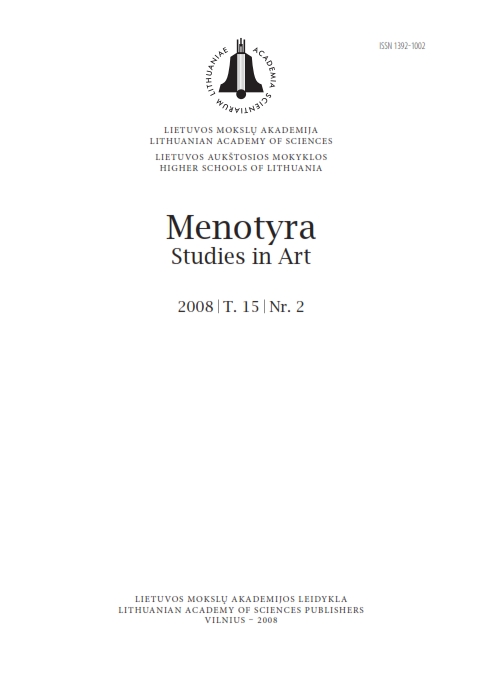Vytauto Kairiūkščio (1890–1961) suprematistinė kūryba ir fotomontažai
Suprematism and photomontages of Vytautas Kairiūkštis (1890–1961)
Author(s): Viktoras LiutkusSubject(s): Cultural history, Visual Arts, Interwar Period (1920 - 1939), WW II and following years (1940 - 1949), Post-War period (1950 - 1989), Sociology of Art
Published by: Lietuvos mokslų akademijos leidykla
Summary/Abstract: In the paper, the rare Suprematist works of art and photomontages created in the 1930s by the most famous representative of the Lithuanian avant-garde art, Vytautas Kairiūkštis, are discussed. The artist, who studied in Moscow in 1920–1921, was first influenced by the works of Kazimir Malevich. After having come to live in Vilnius in 1921, he created many works along the avant-garde spirit and started producing photomontages in the middle 1930s. Suprematism is represented by Kairiūkštis’ paintings, watercolours and drawings of 1922– 1923; their compositions are laconic combinations of two or three graphic signs or small colour planes. He also created similar compositions for the Polish avantgarde publication “Zwrotnica” (No. 5, 1923), literature and art magazine MUBA (“Mūsų baro apžvalga. Révue Internationale”, 1928) published in Paris by J. Tysliava, also made the cover for his mother Julija Kairiūkštienė-Wichert’s poetry book “Błędne ognie ” (Wandering lights, 1925), some advertisements. The best known example of Kairiūkštis’ Suprematist work and typographic experimentation is his design for a part of Exhibition of New Art catalogue (Vilnius, 1923). The design and typographic language of a small size (17 × 12.5) catalogue of 23 pages is very impressive, here visual signs characteristic of Suprematism (black squares, diagonal lines, rectangles, dots) are combined, and in the small space of a white sheet the texts of exhibition participants, letters and numbers of different font size and width are interspersed.From the few Kairiūkštis’ photomontages that survived, the most artistically accomplished are his self-portraits, one of them contains a fragment of Tintoretto’s painting “Suzanne and the Old Man” (1557). Unlike the Dadaist photomontages, there are no paralleled dissonances of images or literary wordplays in Kairiūkštis’ works. Kairiūkštis’ photographic experiments that coincide with international tendencies of avantgarde photographic art stand out in the heritage of pre-war Lithuanian photography.
Journal: Menotyra
- Issue Year: 15/2008
- Issue No: 2
- Page Range: 2-12
- Page Count: 11
- Language: Lithuanian

